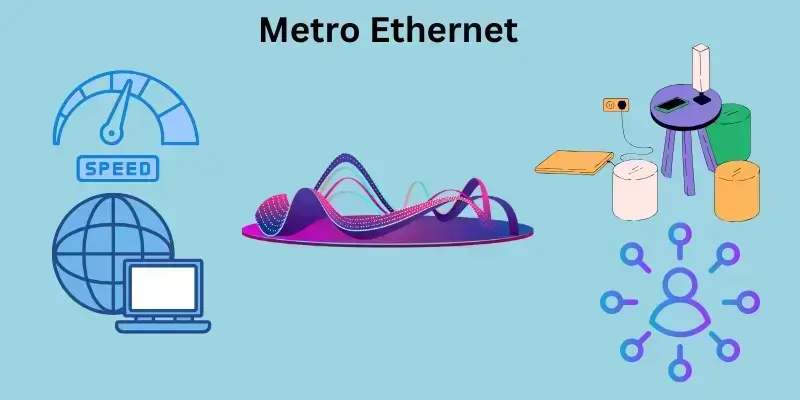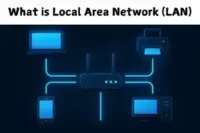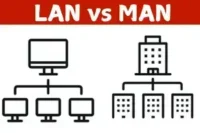Advantages and Disadvantages of Metro Ethernet
Published: January 20, 2025
Is Metro Ethernet the best solution for modern business networks, or does it fall short in some areas? While it’s often praised for its speed and reliability, it’s essential to consider its strengths and weaknesses. Let’s examine Metro Ethernet’s advantages and disadvantages to uncover the whole picture.

What is Metro Ethernet?
Metro Ethernet is a high-speed internet service that connects businesses within a metropolitan area using fiber-optic technology. It provides reliable, scalable, and fast data transfer and is often used to link multiple locations or offices within the same city or region.
Advantages and Disadvantages of Metro Ethernet
When analyzing Metro Ethernet’s Advantages and Disadvantages, it’s essential to consider how its strengths and weaknesses align with your business needs.

Metro Ethernet Advantages
Exploring the Metro Ethernet Advantages reveals why it’s a popular choice for companies worldwide.
Here’s a closer look at the main benefits of Metro Ethernet for businesses.
- Fast data transfer
- Budget-friendly
- Stable connection
- Low latency
- Flexible service options
- Cloud support
- Secure connections
Let’s explore how it simplifies networking and offers numerous benefits for businesses.
Fast data transfer
Metro Ethernet allows quick and efficient data transmission between devices. It is ideal for businesses that must send large amounts of data regularly. It ensures smooth operations without delays, and fast data transfer helps maintain productivity.
Cost-effective solution
Metro Ethernet offers a budget-friendly alternative to traditional networking solutions. It provides high-speed connectivity at a lower cost for businesses. With scalable plans, you can pay for what you need, making it an affordable option for many companies.
Stable connection
A stable connection means fewer disruptions during essential tasks. Metro Ethernet ensures reliable, uninterrupted service, which is crucial for businesses. It reduces the chances of network downtime, keeping your business running smoothly without costly interruptions.
Low latency
Metro Ethernet has low latency, meaning minimal delay when sending or receiving data. This is particularly beneficial for time-sensitive tasks like video conferencing. Low latency ensures real-time communication without lag, improving the overall efficiency of business operations.
Flexible service options
Metro Ethernet offers customizable service options tailored to your business needs. You can choose bandwidth and connection types based on your requirements. This flexibility allows businesses to adjust their services as they grow. You’re not stuck with one-size-fits-all solutions.
Cloud support
Metro Ethernet provides better support for cloud services, making accessing and using cloud-based applications easier. With a stable, fast connection, cloud tools perform optimally. Businesses can rely on cloud storage, collaboration, and other services, which improves the efficiency of remote teams.
Secure connections
Metro Ethernet offers dedicated lines, which are more secure than shared networks. It ensures your data is protected from external threats. With better security, businesses can safely transmit sensitive information. It reduces the risk of data breaches or unauthorized access.
Metro Ethernet Disadvantages
Before adopting it, consider the Metro Ethernet Disadvantages to make an informed decision.
Here’s a closer look at the main drawbacks of Metro Ethernet for businesses.
- Limited coverage
- High costs
- Bandwidth limits
- Connection interruptions
- Limited providers
- Security concerns
Let’s explore the drawbacks of Metro Ethernet and understand how it may impact businesses.
Limited coverage
Metro Ethernet may not be available in all areas. It is primarily offered in larger cities and urban areas. Businesses in rural or remote locations might not have access to this service. This can limit the options for companies outside of metro regions.
High costs
The installation and setup costs for Metro Ethernet can be expensive. Businesses need to invest in infrastructure and hardware. Additionally, ongoing monthly fees may be higher than other internet solutions. For small businesses, this can be a significant expense.
Bandwidth limits
In some areas, Metro Ethernet may have bandwidth limitations. This means there could be restrictions on how much data can be transferred simultaneously. If a business requires a large amount of data to be transmitted regularly, this could cause slowdowns. It’s essential to check the available bandwidth in your area.
Connection interruptions
While generally stable, Metro Ethernet can still experience outages or disruptions. These interruptions can occur due to technical issues, maintenance, or external factors. Connection issues can affect business operations, leading to delays or loss of productivity. It’s essential to have a backup plan for such scenarios.
Limited providers
In some regions, Metro Ethernet service may not be offered by many providers. This means businesses might have fewer options. A limited selection of providers can lead to higher prices or less reliable service and make switching providers more difficult.
Security concerns
While Metro Ethernet offers secure connections, it still uses public infrastructure in some cases. This means that your data may be exposed to risks if improperly managed. Businesses need to take extra security measures to protect sensitive information. Shared networks can increase the risk of unauthorized access.
Metro Ethernet Services Explained with Topologies
Metro Ethernet services offer various ways to connect multiple locations, and the choice of topology helps determine how data travels between them. Different topologies, such as point-to-point, point-to-multipoint, and hub-and-spoke, are used to create reliable, flexible, and cost-effective networks for businesses.
| Metro Ethernet Service | Related Topology | Explanation |
| E-Line (Ethernet Line Service) | Point-to-Point (P2P) | This service connects two locations directly like two friends passing a message to each other. It’s like having a unique line just for you. |
| E-LAN (Ethernet LAN Service) | Point-to-Multipoint (P2MP) | This service connects one central location to many remote places, like a teacher talking to students in different classrooms. |
| E-Tree (Ethernet Tree Service) | Hub-and-Spoke | This service connects a central location (the hub) to many other locations (the spokes), like a bus station that sends buses to different places. |
| E-Access (Ethernet Access Service) | Ring or Mesh Topology | This service connects different locations to the internet, like a bunch of roads leading to one big highway. It gives businesses easy access to the network. |
Conclusion
In conclusion, while Metro Ethernet offers significant advantages such as high-speed data transfer, cost-effectiveness, and scalability, it also comes with limitations, including high installation costs and limited coverage in some areas. Businesses should consider their needs, location, and budget before choosing Metro Ethernet as a networking solution. By weighing the pros and cons, companies can make an informed decision that best supports their connectivity goals and operational requirements.
FAQs About Metro Ethernet Advantages and Disadvantages
Metro Ethernet is a high-speed, scalable networking solution that connects multiple locations in a metro area using fiber-optic technology. Businesses often use it to ensure fast, reliable internet and data transfer.
Yes, Metro Ethernet is typically faster, more reliable, and offers greater scalability than regular broadband. It’s designed for business needs, providing more bandwidth and lower latency.
Metro Ethernet is mainly for businesses in urban areas. It’s not commonly available for residential use, requiring specialized infrastructure and higher costs.
Metro Ethernet offers fast speeds, reliable connections, and scalability, which helps businesses grow and operate efficiently. It also provides low latency, which is essential for real-time video calls and cloud applications.
Some disadvantages include high installation costs, limited geographic coverage, and potential bandwidth limitations in certain areas. It’s essential to check availability and pricing before choosing Metro Ethernet.
Metro Ethernet is a type of fiber-optic internet, but it’s specifically designed for businesses and connects multiple locations in a metropolitan area. Fiber optic internet can be used for home or small business use, while Metro Ethernet offers more tailored services for more extensive networks.
Metro Ethernet is generally safe, mainly if dedicated lines are used. However, companies should ensure proper security measures to protect sensitive data, as the network may still rely on public infrastructure in some cases.
Metro Ethernet is well-suited for high data usage, offering scalable bandwidth options. Businesses can choose the bandwidth based on their data needs, ensuring smooth operations during peak usage times.
Metro Ethernet can be costly due to its installation and maintenance requirements. Businesses must pay for fiber-optic infrastructure, equipment, and setup, which can add to the overall expense.
Metro Ethernet is usually available in larger cities or metropolitan areas. To find out if it’s available in your area, you can check with local service providers or use online availability tools.
Metro Ethernet uses the TCP/IP model’s five layers for high-speed data transfer. The Physical and Data Link layers handle local connectivity, and the Network, Transport, and Application layers ensure reliable and efficient data communication across metropolitan networks.
Backbone cables enable metro Ethernet networks to efficiently manage large data loads between local businesses and service providers, enhancing overall speed and connectivity.





